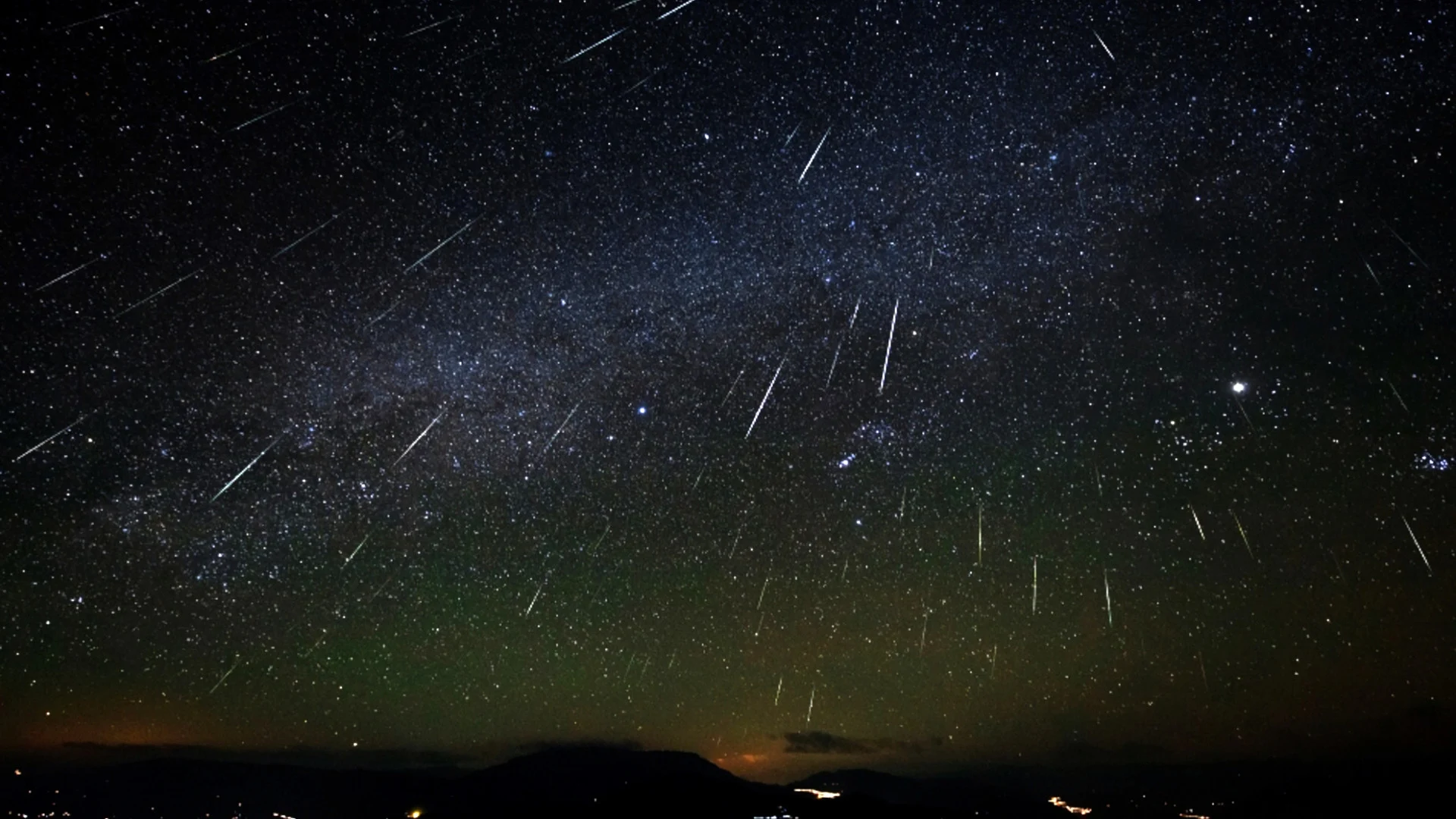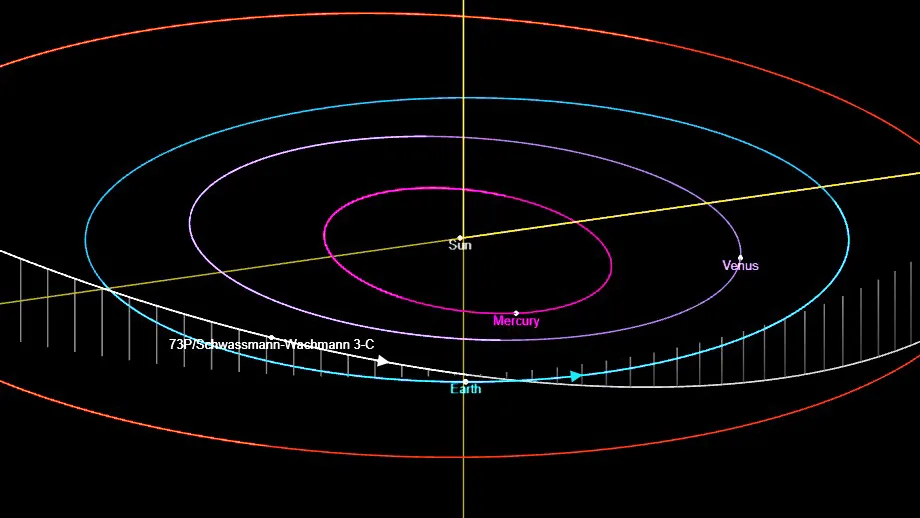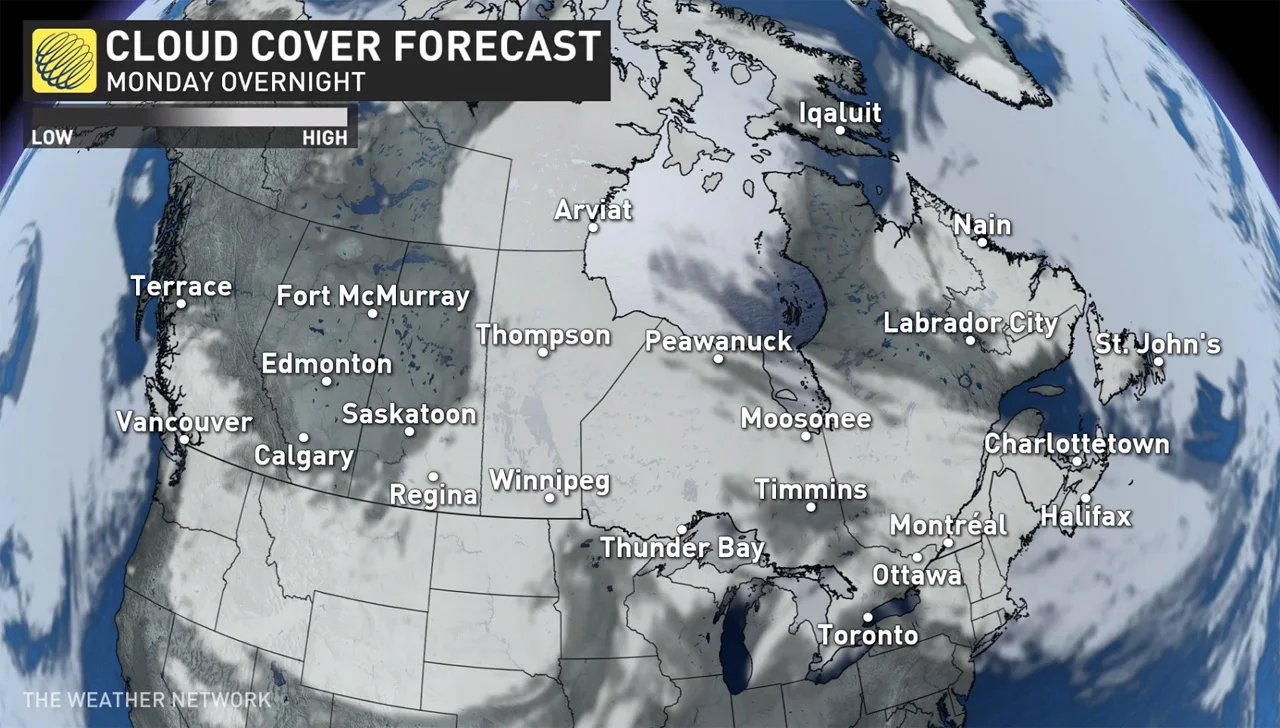
Was there a tau Herculids meteor storm Monday night? The science weighs in
Astronomers figured this was going to be an all-or-nothing event. It appears to have fallen somewhere in between.
As of now, on the morning after the event, it appears as though there was no meteor storm on Monday night. Observers on social media reported numbers roughly 10 to 20 times higher than what the tau Herculids have typically produced over the past 90 years or so.
That qualifies as a tau Herculids outburst, but what happened to the meteor storm?
Well, the analysis is ongoing at the moment, but it may have actually happened.
As reported by Dr. Denis Vida, a meteor scientist at Western University and one of the leads of the Global Meteor Network, "Hundreds of tau Herculid meteors were detected last [night] from individual #globalmeteornetwork stations! Data analysis is in progress. Observing in person was also a rare treat, we saw short bursts of 7-8 meteors in a few minutes."
So, why didn't we see the storm?
As noted by the experts (see below), they expected the meteors to be quite faint, due to the relatively slow speed of the comet debris. Thus, many were likely so dim they were visible only from the darkest regions, far from urban light pollution. Others may have been right at the limit of our perception, making us question if we really saw them (this author believes he 'saw' at least a half-dozen of these). Many more could have actually been invisible to the naked eye.
Even faint or invisible meteors can be detected by Canadian meteor radar, though, and it may have captured what our eyes could not see.
Update (1:20 p.m. EDT, Tuesday): Denis Vida posted to Twitter again this afternoon, after his analysis was done.
"We used over 500 #globalmeteornetwork cameras world-wide to measure the activity of the #TauHerculids2022," he wrote. He reported that the zenith hourly rate (ZHR) — the optimal rate of meteors seen under ideal viewing conditions — was between 26 and 30 meteors per hour.
"Unfortunately no storm, but still an exciting shower!" he added.
So, there we have it. The material that shot out from the comet breakup, back in 1995, definitely produced a meteor outburst from the tau Herculids this year. However, there wasn't enough of that material present to result in a meteor storm.
The original story continues below.
--
Roughly 27 years ago, in 1995, astronomers watched as a comet began to shatter. Although comet 73P/Schwassman-Wachmann 3 was discovered some 65 years before, it had been a fairly unremarkable object for all that time. Even the meteor shower associated with it, the tau Herculids which peak at the end of May each year, barely produces any meteors at all. Since 1995, though, the comet brightened significantly as it broke into multiple fragments. This breakup also ejected a fair amount of dust and debris out around the comet.

This image from NASA’s Spitzer Space Telescope shows an infrared view of the shattered remnants of Comet 73P/Schwassman-Wachmann 3, strung out in a trail of beads along its orbit. The larger fragments can be seen to emit plumes of ice, dust and gas, which are pushed away by radiation pressure due to sunlight. (Credit: NASA)
Since then the tau Herculids have remained an unimpressive meteor shower. Each year, it occurs between late May and mid-June, and peaks at the end of May. However, it usually produces so few meteors that it hasn't been worth mentioning in any seasonal night sky observing guides.
This year is different, though.
On the night of May 30-31, 2022, astronomers believe there is a chance that Earth could pass through a concentrated cluster of debris from 73P/Schwassman-Wachmann 3. If that chance pays out, it will likely produce an outburst that rivals the major annual meteor showers, such as the Perseids or the Geminids. However, there's also the potential that we could see thousands of bright streaks in the sky as it delivers a meteor storm!
The time to watch for this depends on where you live. Researchers with the Institute for Celestial Mechanics and Computation of Ephemerides at the Paris Observatory have shown that if an outburst occurs, it will be centred over California's Baja Peninsula at around 10 p.m. PDT on May 30. Most of North America will be able to see it, though, with the exception of the Arctic and the Pacific Northwest.
For Canada, this means that the eastern half of the country has the best chance to see any outburst that may occur. The chances become more slim the farther west an observer is, due to the effects of twilight.
Meteor activity is expected to last for only a few hours, peaking at:
- 2:30 a.m. Tuesday NDT, - 2 a.m. Tuesday ADT, - 1 a.m. Tuesday EDT, - 12 a.m. Tuesday CDT, - 11 p.m. Monday CST/MDT, and - 10 p.m. Monday PDT.
The outburst, if it happens, will likely start an hour before the peak, and will probably last until an hour or so after.

Look towards the bright star Arcturus, in the southwestern sky, in the hours just after midnight, EDT, on the night of Monday, May 30 to Tuesday, May 31, 2022, for the radiant of the potential tau Herculids outburst. Credit: Stellarium/Scott Sutherland
According to NASA, the meteors will likely be faint. Therefore, we'll need to get away from light pollution to see most of them. Read on towards the bottom of the article for tips on how to get the most out of the event.
ON THE OTHER HAND
Although we may see something truly awe-inspiring on Monday night, we shouldn't get our hopes up too much.
"This is going to be an all or nothing event," said Bill Cooke, of NASA's Meteoroid Environment Office.
Meteor showers are the result of Earth passing through streams of debris left behind by comets and some asteroids as they orbit the Sun. The key word in all of that, for this story, is behind. The tiny meteoroids in the debris stream are nearly always blown off the comet or asteroid to follow along in the wake of their parent object.
In the case of this potential outburst of the tau Herculids, it all depends on debris from 73P/Schwassman-Wachmann 3 being ejected with enough force during the breakup to shoot it ahead of the comet.
The reason for this is due to the timing and relative positions of Earth, the comet's debris stream, and the main fragments of the comet.
Normally, we see next to nothing at this time of year from 73P/Schwassman-Wachmann 3's very diffuse debris stream. After the comet shattered, though, there was a lot more dust and debris located near the remaining fragments. If we encountered some of that more concentrated debris, it would produce the outburst we're looking for. However, the timing is off.

This orbit diagram shows the relative positions of the inner planets, the comet apparent primary fragment 73P/Schwassmann-Wachmann 3-C, and the comet's orbit, on May 31, 2022, at 5 UTC. Credit: NASA/JPL-Caltech/Scott Sutherland
At the moment, those larger fragments of the comet are nowhere near us. They're due to pass through our current location in space over the next few months. By then, though, Earth will be millions of kilometres away from where we are now, as the planet continues along its orbit around the Sun. So, for this outburst to happen, we need some of the comet's debris to have shot so far ahead of the fragments that it is in our path on Monday night.
According to NASA, observations with the Spitzer Space Telescope during the comet breakup did show that some of the debris was ejected with enough force that we should encounter it.
"This is one reason why astronomers are excited," Lee Mohon wrote on NASA's Watch the Skies blog.
PROMISING SIGNS
There's no indication yet if the outburst is actually occurring, and we've certainly been disappointed by previous outburst predictions. However, we are seeing some promising signs.
The Spanish Meteor Network managed to capture a tau Herculid fireball on Friday night.
Additionally, the Global Meteor Network detected its first tau Herculids, too.
The questions that remain are 1) how much debris is in our path for Monday night, and 2) exactly how fast will it be travelling when it gets swept up by Earth's atmosphere. (The faster the meteoroids are travelling, the more likely they are to produce a flash when they are swept up by Earth's atmosphere.)
If there is only a small amount of relatively slow-moving meteoroids, we likely won't see anything. The meteor shower may still occur, but as the researchers point out, it may only be picked up by Canadian Meteor Radar.
If there is a lot of fast-moving debris, though, with plenty of 'sand' and 'gravel' mixed in with the dust, we will see a spectacular display light up the sky.

TIPS FOR WATCHING A METEOR SHOWER
Meteor showers are events that nearly everyone can watch. No special equipment is required. In fact, binoculars and telescopes make it harder to see meteor showers, by restricting your field of view. However, there are a few things to keep in mind so you don't miss out on these amazing events.
The three best practices for observing the night sky are:
Check the weather,
Get away from light pollution, and
Be patient.
Clear skies are essential. Even a few hours of cloudy skies can ruin your chances of watching an event such as a meteor shower. So, be sure to check The Weather Network on TV, on our website, or from our app, and look for my articles on our Space News page, just to be sure that you have the most up-to-date sky forecast.
Next, you need to get away from city light pollution. If you look up into the sky from home, what do you see? The Moon, a planet or two, perhaps a few bright stars such as Vega, Betelgeuse and Procyon, as well as some passing airliners? If so, there's too much light pollution in your area to get the most out of a meteor shower. You might catch an exceptionally bright fireball if one happens to fly past overhead, but that's likely all you'll see. So, to get the most out of your stargazing and meteor watching, get out of the city. The farther away you can get, the better.
Watch: What light pollution is doing to city views of the Milky Way
For most regions of Canada, getting out from under light pollution is simply a matter of driving outside of your city, town or village until a multitude of stars is visible above your head.
In some areas, especially in southern Ontario and along the St. Lawrence River, the concentration of light pollution is too high. Getting far enough outside of one city to escape its light pollution tends to put you under the light pollution dome of the next city over. The best options for getting away from light depend on your location. In southwestern Ontario and the Niagara Peninsula, the shores of Lake Erie can offer some excellent views. In the GTA and farther east, drive north and seek out the various Ontario provincial parks or Quebec provincial parks. Even if you're confined to the parking lot after hours, these are usually excellent locations from which to watch (and you don't run the risk of trespassing on someone's property).
If you can't get away, the suburbs can offer at least a slightly better view of the night sky. Here, the key is to limit the amount of direct light in your field of view. Dark backyards, sheltered from street lights by surrounding houses and trees, are your best haven. The video above provides a good example of viewing based on the concentration of light pollution in the sky. Also, check for dark sky preserves in your area.
When viewing a meteor shower, be mindful of the phase of the Moon. Meteor showers are typically at their best when viewed during the New Moon or Crescent Moon. However, a Gibbous or Full Moon can be bright enough to wash out all but the brightest meteors. Since we can't get away from the Moon, the best option is just to time your outing right, so the Moon has already set or is low in the sky. Also, you can angle your field of view to keep the Moon out of your direct line of sight. This will reduce its impact on your night vision and allow you to spot more meteors.
Once you've verified you have clear skies and you've limited your exposure to light pollution, this is where being patient comes in.
For best viewing, your eyes need some time to adapt to the dark. Give yourself at least 20 minutes, but 30-45 minutes is best for your eyes to adjust from being exposed to bright light.
Note that this, likely more than anything else, is the one thing that causes the most disappointment when it comes to watching a meteor shower.
If you step out into your backyard from a brightly lit home and looking up for a few minutes, you might be lucky enough to catch a rare bright fireball meteor. However, it's far more likely that you won't see anything at all. Meteors may be streaking overhead, but it takes time for our eyes to adjust, so that we can actually pick out those brief flashes of light. Waiting for at least twenty minutes, while avoiding sources of light during that time (streetlights, car headlights and interior lights, and smartphone and tablet screens) dramatically improves your chances of avoiding disappointment.
Sometimes, avoiding your smartphone or tablet isn't an option. In this case, set the display to reduce the amount of blue light it gives off and reduce the screen's brightness. That way, it will have less of an impact on your night vision.
You can certainly gaze into the starry sky while you are letting your eyes adjust. You may even see a few of the brighter meteors as your eyes become accustomed to the dark.
Once you're all set, just look straight up and enjoy the view!
